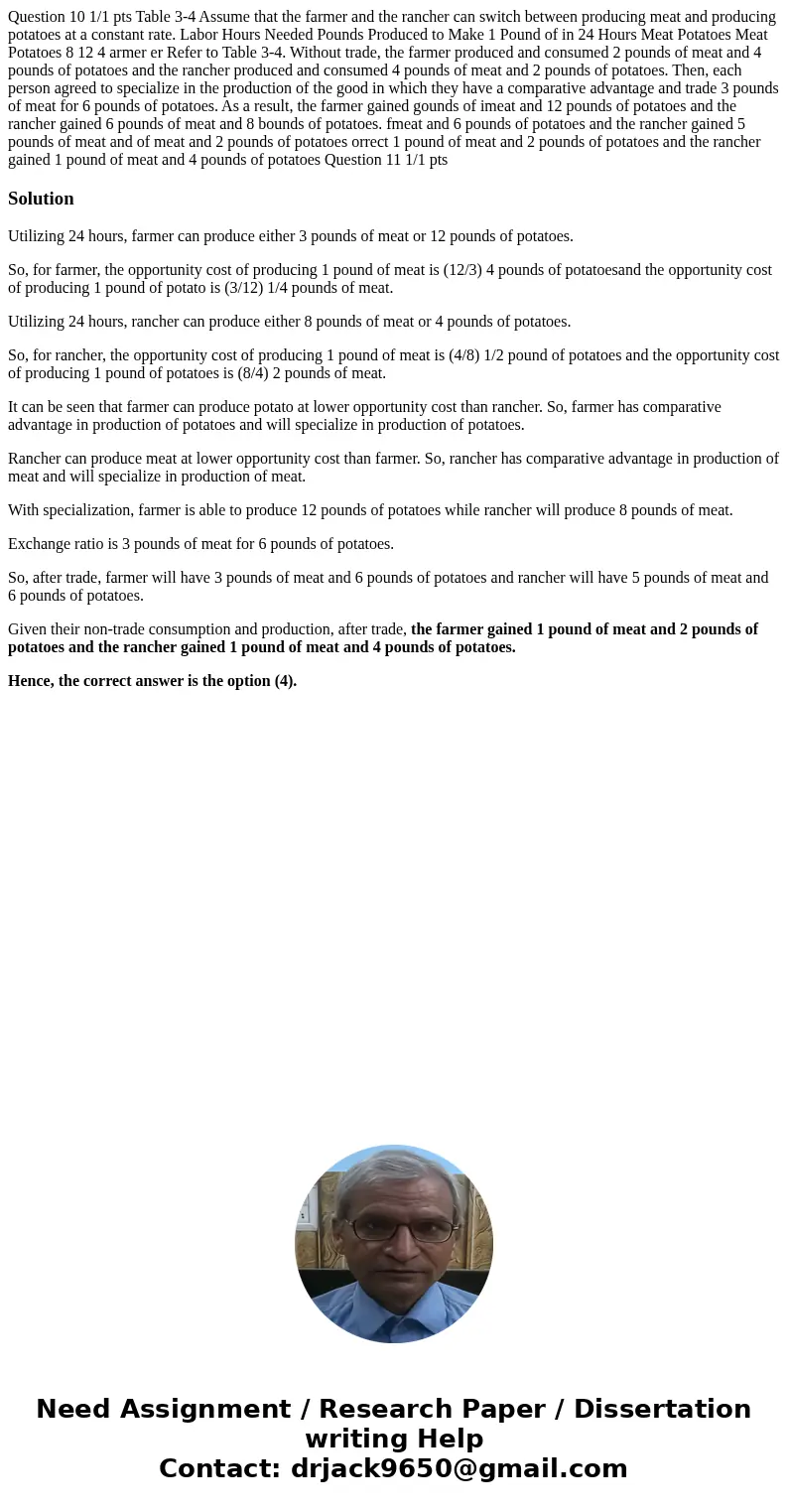Question 10 11 pts Table 34 Assume that the farmer and the r
Solution
Utilizing 24 hours, farmer can produce either 3 pounds of meat or 12 pounds of potatoes.
So, for farmer, the opportunity cost of producing 1 pound of meat is (12/3) 4 pounds of potatoesand the opportunity cost of producing 1 pound of potato is (3/12) 1/4 pounds of meat.
Utilizing 24 hours, rancher can produce either 8 pounds of meat or 4 pounds of potatoes.
So, for rancher, the opportunity cost of producing 1 pound of meat is (4/8) 1/2 pound of potatoes and the opportunity cost of producing 1 pound of potatoes is (8/4) 2 pounds of meat.
It can be seen that farmer can produce potato at lower opportunity cost than rancher. So, farmer has comparative advantage in production of potatoes and will specialize in production of potatoes.
Rancher can produce meat at lower opportunity cost than farmer. So, rancher has comparative advantage in production of meat and will specialize in production of meat.
With specialization, farmer is able to produce 12 pounds of potatoes while rancher will produce 8 pounds of meat.
Exchange ratio is 3 pounds of meat for 6 pounds of potatoes.
So, after trade, farmer will have 3 pounds of meat and 6 pounds of potatoes and rancher will have 5 pounds of meat and 6 pounds of potatoes.
Given their non-trade consumption and production, after trade, the farmer gained 1 pound of meat and 2 pounds of potatoes and the rancher gained 1 pound of meat and 4 pounds of potatoes.
Hence, the correct answer is the option (4).

 Homework Sourse
Homework Sourse